January 16, 2022
All night Tagonga partied. Every time I woke, I heard music and dogs and honking as the locals celebrated Saturday night. When the sun rose, loud music was still playing from another hostel a half mile away that faced us. We’d not slept well but were glad to be in this vibrant part of the world where people happily celebrated life.
Our taxi was theoretically supposed to arrive at 10:30 am to take us to our ecolodge in Minca, about 45 minutes away in the mountains. We gave it a 50/50 chance that anyone would be there but at 10:25, our driver Lenny arrived in a tiny battered Kia. We haggled over the price in the middle of the busy street, settling on 70,000 pesos (about $17 US) and we left the small village of Tagonga in the car, barely big enough for us and our two small suitcases.
On the way, we drove through the outskirts of Santa Marta. Neither of us had seen anything as dirty and dilapidated, except maybe parts of Tijuana, Mexico. Small concrete hovels built on hills had trails of trash from the windows and doors spilling down the hillside, and the people we saw on the streets looked downtrodden though everyone was busy trying to make a living. Dust and smoke choked the air as we weaved through traffic. Even in the beat-up taxi we felt conspicuous though I was wearing an old T-shirt, faded shorts and broken sandals and Susan was dressed no better. The smartwatch on my wrist probably represented weeks of wages for the poorest and we were heading to an ecolodge in the clean air above Santa Marta where people paid $50 a night to commune with nature. It wasn’t the first nor the last time we felt exceptionally fortunate.
Soon, we were climbing into the mountains outside of town and left the city behind. Cacti and scrub gave way to large-leafed trees and banana plants as the taxi struggled up the hills. Twice the driver nervously asked us how much farther. The tiny three-cylinder engine was surging and we were struggling in first gear. Eventually, we found the gate to Sol de Minca ecolodge and preserve where the driver promptly got out and raised the hood to let the tiny engine cool. He grinned at us as he said, Muy caliente! Going downhill, he said, would be fine. We paid him a 30% tip and he smiled hugely, fist-bumped us and thanked us. He also gave us his WhatsApp number and said he could pick us up in three days to take us to the airport when we’d be ready to leave Minca for our next destination. Good businessman.
We were met at the gate by Frank, a lanky 20-something local who spoke a bit of English. He grabbed Susan’s suitcase and I grabbed mine as we headed up the long steep dirt path to the main house, both of us panting. At the top, Frank explained that the lodge was built in concert with the natural surroundings by the family who also lived there, with help from indigenous locals.
The main lodge had very slow internet and up at the cabins where we’d stay there was no Wi-Fi, only incredibly slow 2G service (think dial-up speed), which meant our phones were not very useful. We’d be unplugging quite a bit here. Frank told us the story of how the family built the lodge over the past few years. As he spoke, he gave us a couple of glasses of water that he assured us were purified. It was the only time we didn’t use our UV sterilizer for drinking water and Susan would soon pay for it.
It was too early to check in so we decided to walk to the small village of Minca, about 20 minutes away. The steep path, we were told, predated European settlement and had been trod on for centuries. Eventually, it led to a larger path to the village.
Minca is a small and not particularly pretty village but it’s in a beautiful location and has somewhat of a frontier vibe to it, which makes sense when you realize that only 10 years ago it was a stronghold for FARC, the rebel military wing of the Colombian Communist Party. Up until WWII, Minca was a nearly self-sustaining village based on coffee production in surrounding hillside farms. Coffee exports came nearly to a standstill during the war, replaced in the early 1960’s with marijuana and cocaine. It wasn’t long before FARC came to the area and set up their own marijuana and coca farms to fund their operations. By the early 1980’s, violent battles erupted as FARC waged war against the government, riddled the police station with bullet holes and attacked locals who didn’t comply with extortion demands. By the 1990’s, paramilitary groups waged war against FARC and the violence escalated. The people of Minca were caught in the crossfire and by 2010 most left. Since then, Minca has mostly recovered and there are now about 500 people living there. In the last five or six years, the little town has become well-known to the acaì bowl-and-chai tea backpacker crowd, though one of the corrupt paramilitary groups, Los Pachencas, apparently still lurks in the area, making for an uneasy truce.
Along the path into the small town, we passed a few more ecolodges before crossing a bridge and suddenly were bombarded with the sound of excruciatingly loud boombox music from a couple of motorcycle rental outfits. The couple of narrow sort-of-paved streets were wide enough only for one car, and the few cars that ventured there jostled for position as the ubiquitous small motorcycles zipped by. There were no traffic lights or even street signs.
Lots of people were out and about—including locals, weekend visitors from Santa Marta, backpackers, and eco-tourists. Until now we’d come across very few gringos in Colombia but as we walked around to get our bearings in Minca we heard a little English as well as German spoken, mostly by 20-somethings.
We wandered through the town, window shopping at a few small tiendas and people watching. In need of a snack, we stopped at a panderia and got a few small loaves of pan de chocolate (bread with chocolate)—some for now and some for later. I really wanted a croissant though, so when we saw another bakery nearby, we stopped in there as well and found a near-perfect French-style croissant. Bread, it seems, is something that the visitors to Minca crave (including us)!
We also dropped in at a Cacao Museum which turned out to be more of a store, selling local chocolate, coffee, handmade chachkas, and CBD products. We asked the shopkeeper if she also had other cannabis products, since marijuana was still, at least unofficially, the big local cash crop and apparently the local weed was among the best anywhere. It’s legal to possess and use cannabis in Colombia, just as it is in California where we live, but it’s not legal to buy it. We soon would learn a way around this. The shopkeeper didn’t have any but told us to come back in three hours. We decided to check out one of the nearby waterfalls and stop back later.
We turned off the main road and walked up a steep road out of town, toward the least well-known Minca waterfall, Cascada Las Piedras, a mile and a half away. Our plan was to check out one of the more popular waterfalls in the next day or two–when it would be a weekday and perhaps less crowded. The twisting, steep road was surrounded by dense forest and was too narrow for most cars, but motorcycle taxis regularly passed by. Our GPS told us the trail to the falls led off the road, but when we reached the spot where the trailhead should be we struggled to find it. The trailhead turned out to be behind a restaurant/bar and a worker there explained in Spanish that it was a peaceful area where we were headed and large groups, music and litter were strictly prohibited.
The slippery, leaf-strewn dirt trail led very steeply downhill and we knew it would be a slow, hot slog back. But at the end, we were rewarded with a beautiful rushing boulder-strewn stream with refreshingly cool water. Through the brush, we saw peeks of the waterfall across the creek and wished we’d brought our swimsuits—to get up to the falls, we’d have to cross the deep stream and then hike up a short trail on the other side.
But we were perfectly happy right where we were. We climbed on the boulders, soaked our feet and rested while we took in the sounds and scents of the jungle as a few more people came to swim.
Leaving the falls, we slowly trudged up the trail then down the road back to town. Once there, we rested on a colorful bench before returning to the cacao museum/store where the shopkeeper warmly greeted us. She left her shop unattended for a minute and walked us over to a nearby tienda where the owner handed us a few little bags of weed and then sold us rolling papers and a lighter (the weed was “free”), all for just $3.00 US. Susan’s Spanish was improving daily and she managed the transaction entirely in Spanish.
It was still a little early for dinner (in fact, in Colombia any time before 7:00 pm is early for dinner), but we decided to eat so we would be able to hike back to the lodge before sunset. We found the Lazy Cat restaurant along the main street in town where we enjoyed our early dinner along a river, away from the busy, dusty street. We looked up at one point during dinner and (not ironically) saw one of the cats-in-residence climbing on the hot tin roof above.
It was starting to get dark when we headed back up the main trail. We both began to notice we were itchy and that mosquitos were now out in full force. Ominously, Susan commented that she suddenly had a bit of a stomach ache. We missed the turnoff to the lodge trail and kept walking, uncertain as the trail became narrower and the sun set. The dense canopy and winding trail made it impossible to get our bearings. I could see the headlines: Eco-Gringos’ bodies found after three-month search.
Eventually, we backtracked and found the dim steep trail back to the lodge and stumbled in the near-dark to the main building where the owner, Federico, was there to welcome us.
Frederico was so far the warmest, friendliest Colombian we’d met and we instantly liked him. In reasonably good English, he explained that his family began building the lodge after the demise of FARC ten years ago. He hoped, with a shrug, that Minca would continue to prosper and peace would hold. He explained that the lodge is on a natural reserve and practiced conservation techniques, and he told us about how they built the lodge entirely by hand following bio-construction and permaculture principles. The lodge included a vegetarian restaurant that used local ingredients, mostly grown at the ecolodge property. With a huge grin he told us that his son was born in one of the incomplete cabins two years before.
We were hot, sweaty and dusty from the long walk and looked forward to relaxing and a shower. Federico led us up steep bamboo and dirt steps through the jungle to our cabin, which was as exquisite as the main lodge, built by hand of native wood and local adobe.
The lodge and three cabins were built on the sides of a steep forested hill and walking to and from anywhere on the premises meant a steep climb or descent. Not a place for bad knees. Federico showed us through the hand-carved door into the 10×12 screened structure that would be our home for the next few days. There was a double bed and a twin bed, both covered in mosquito netting.
Our huge and open shower room was a few steps from the cabin. The shower head was a bamboo pipe from the wall that dispensed cold water – colder than anything yet. But we were soon showering with lots of oh, jeez! and whoas.
After our chilly showers, we sat out on our small balcony looking at the shimmering view of Santa Marta a few miles away. It was mesmerizing. A gentle breeze blew as the temperature dropped and we slipped into our mosquito-protected bed.

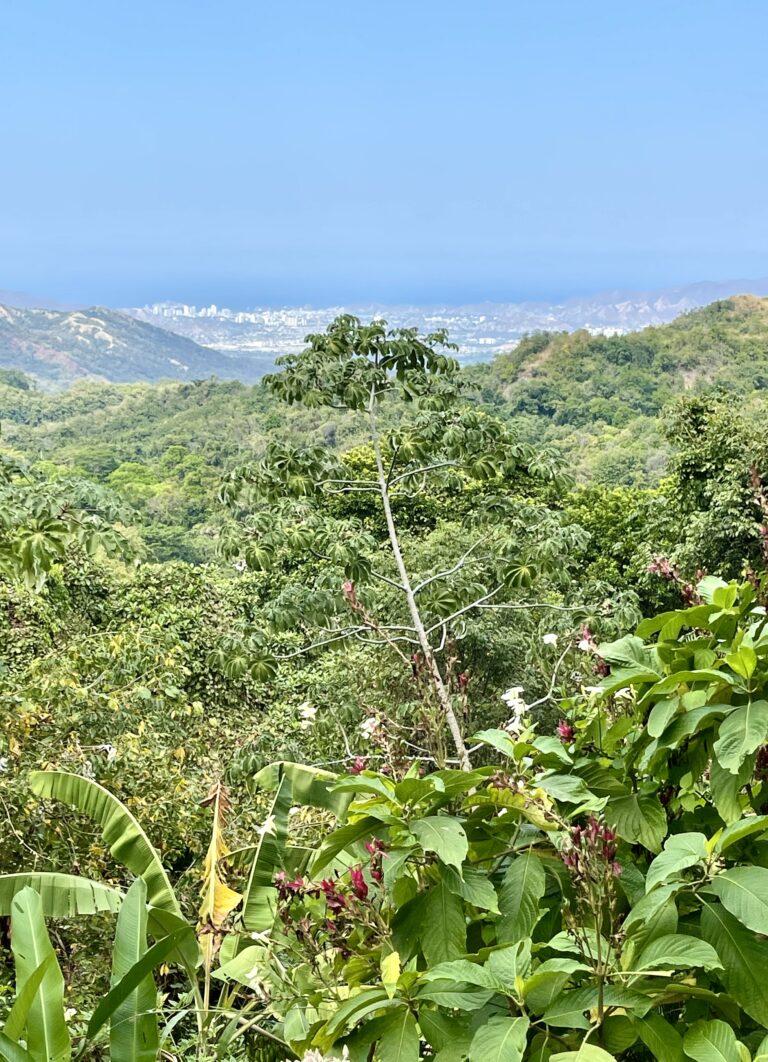
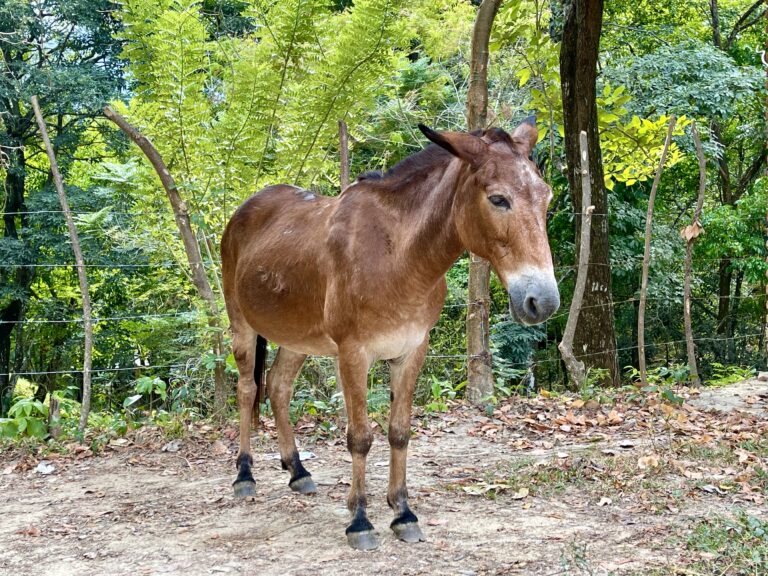
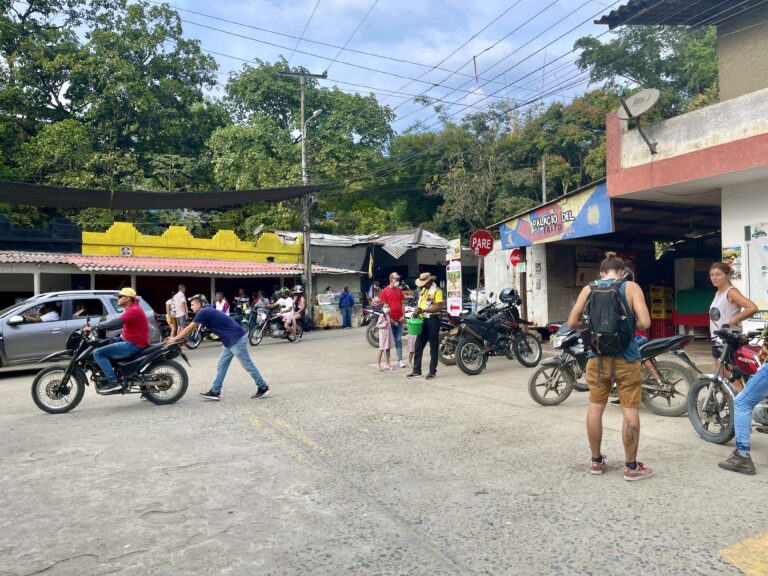
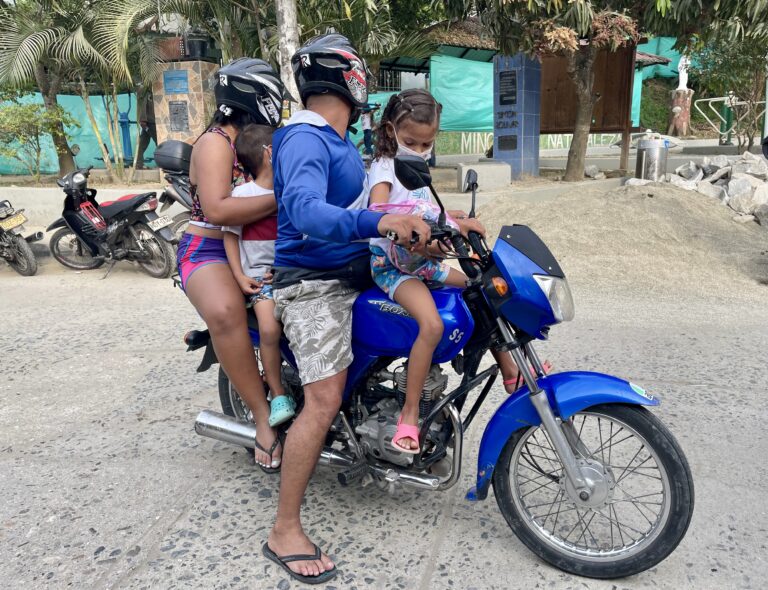
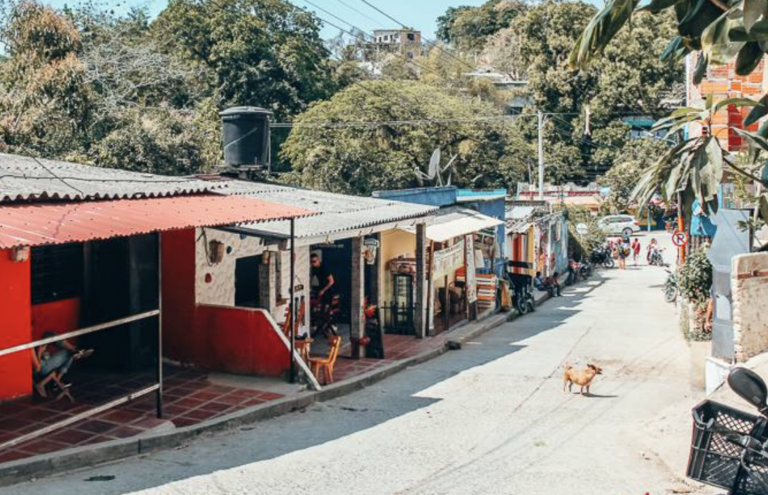
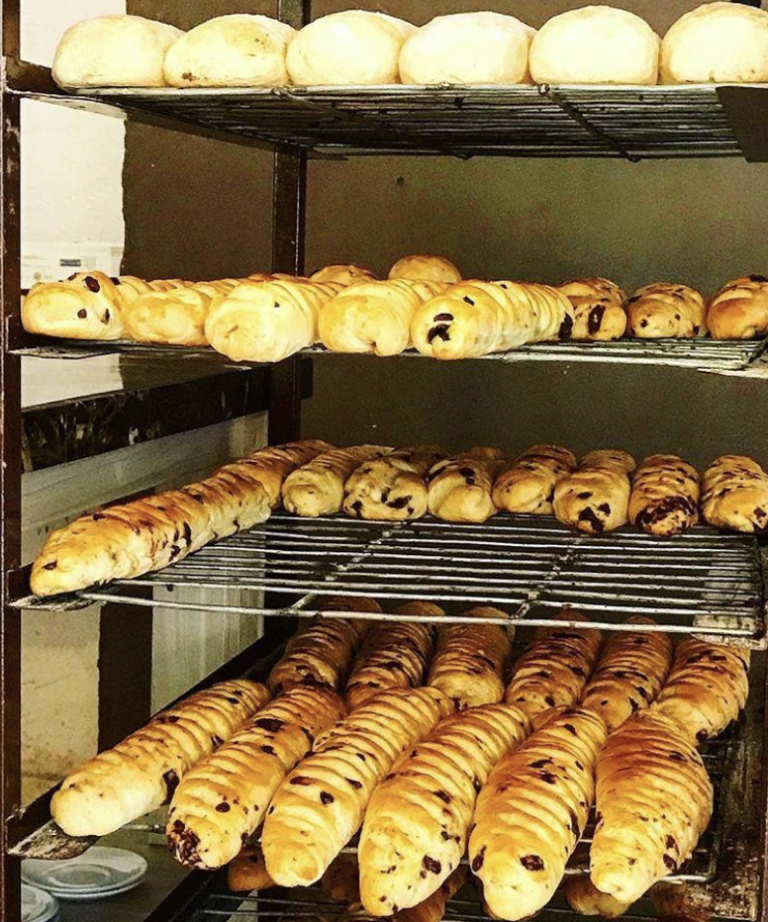
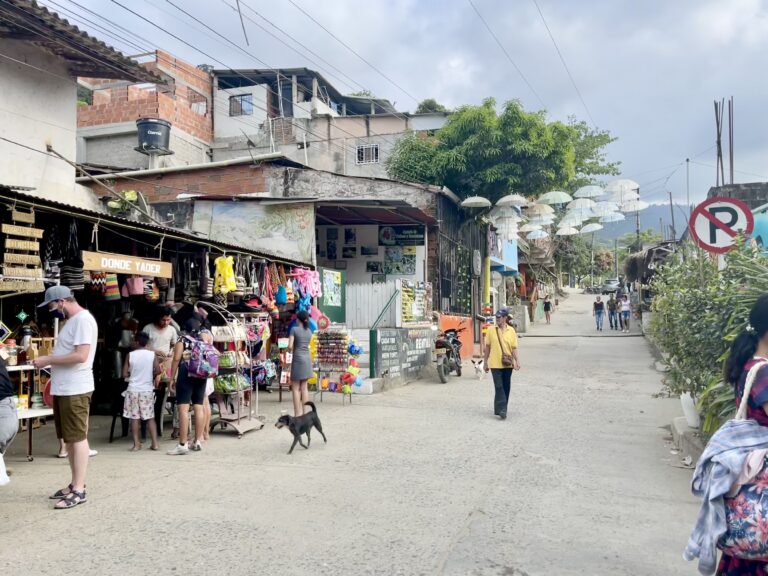
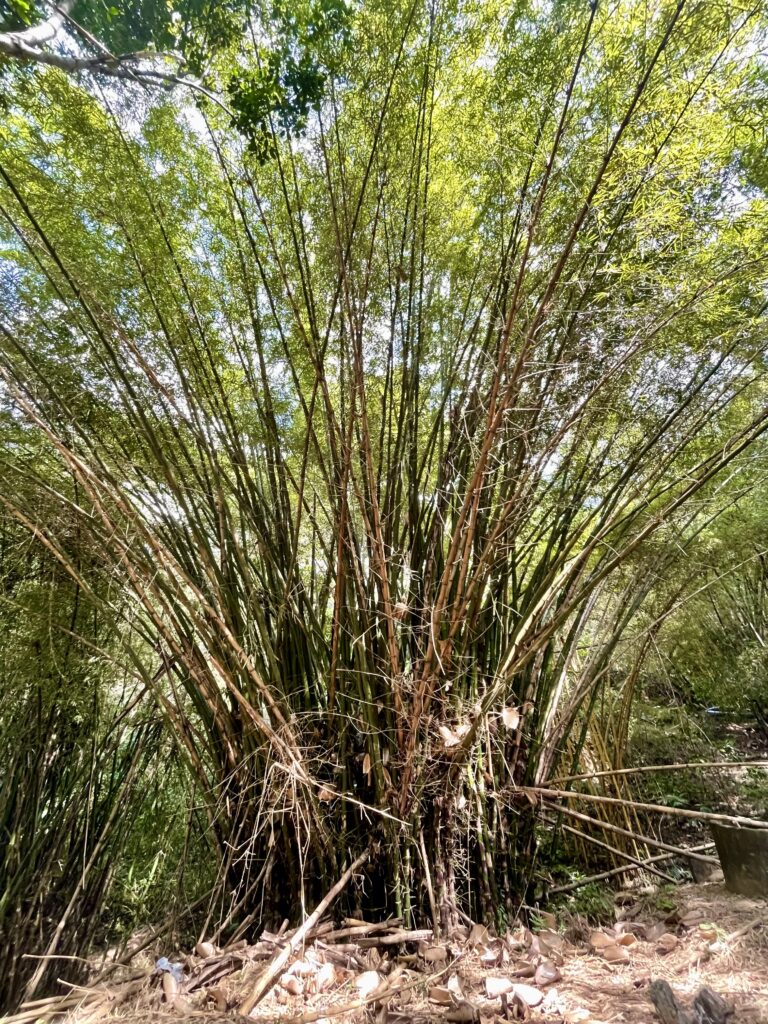
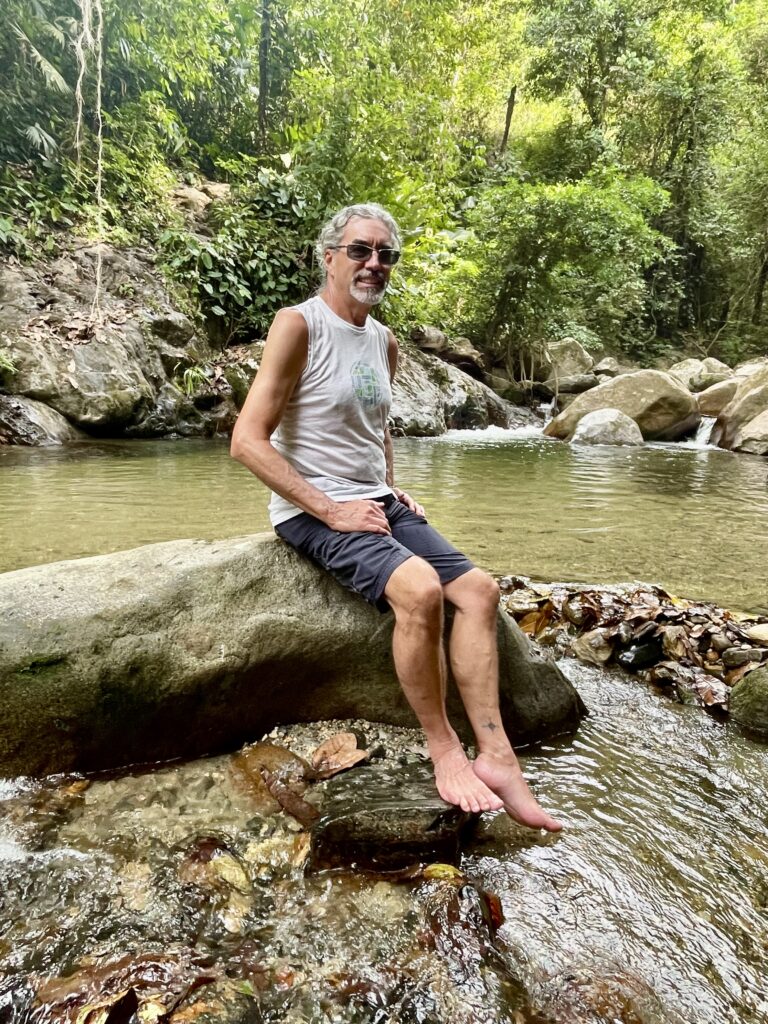
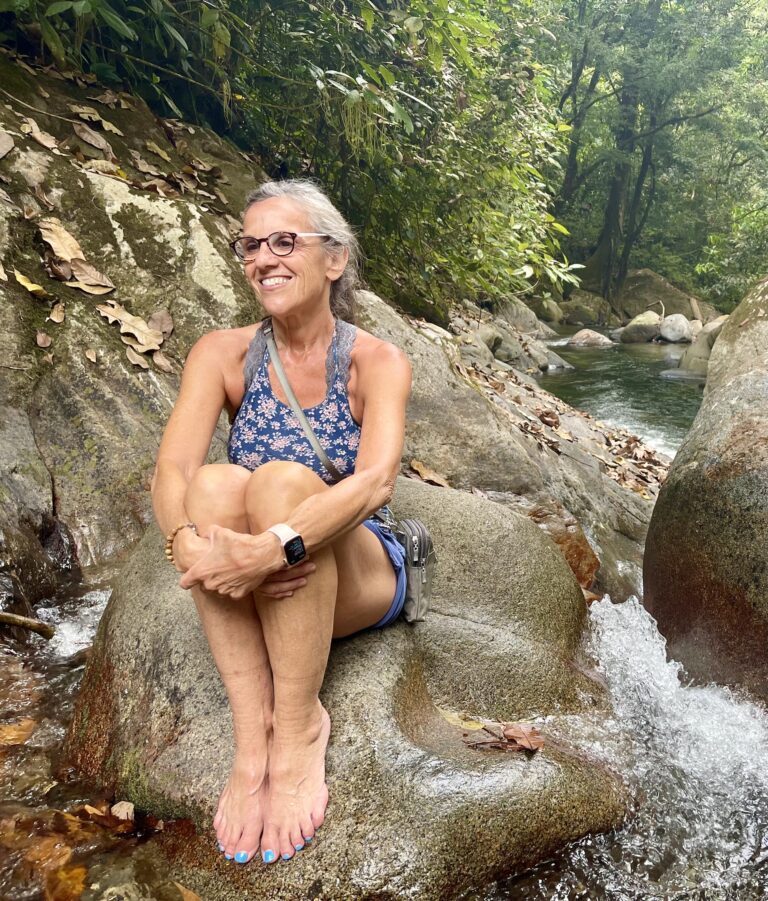
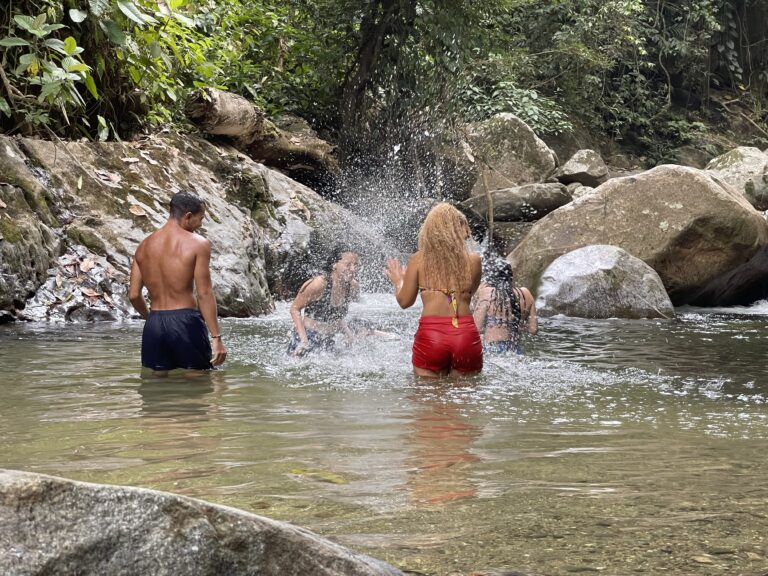
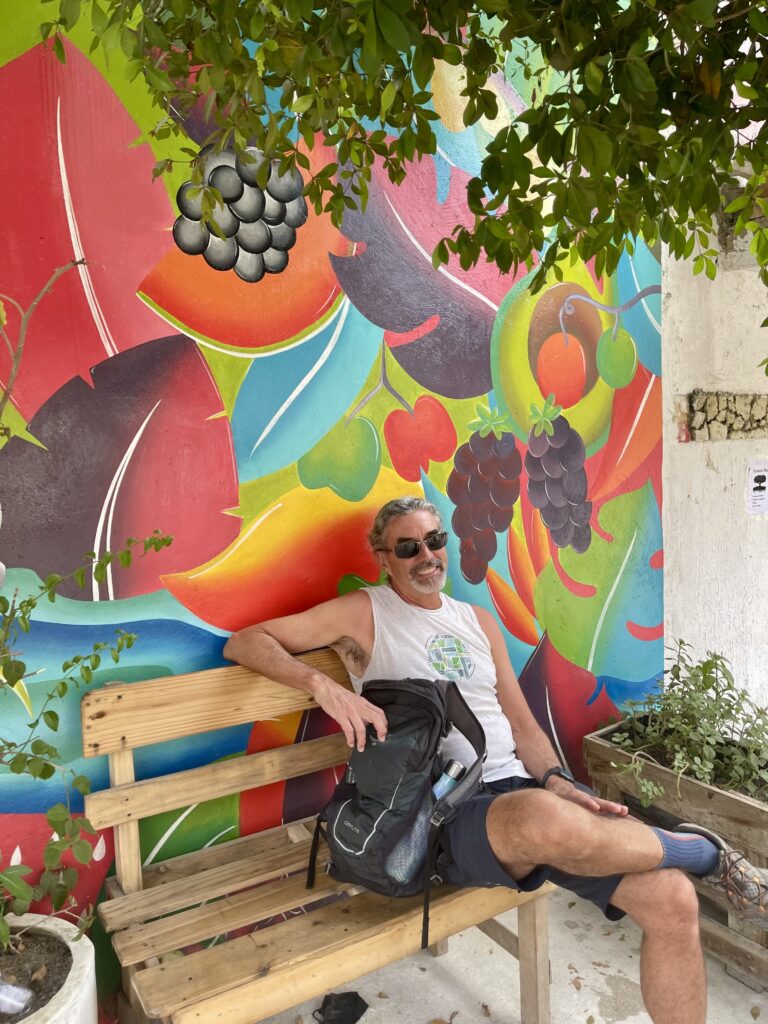
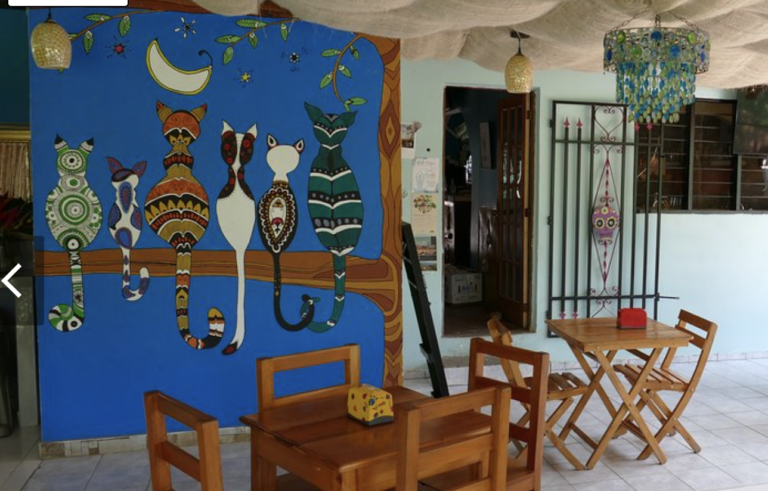
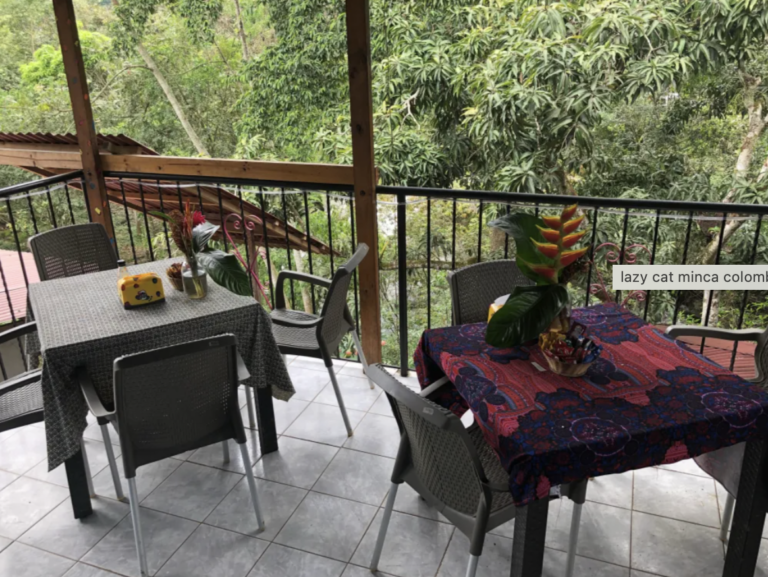
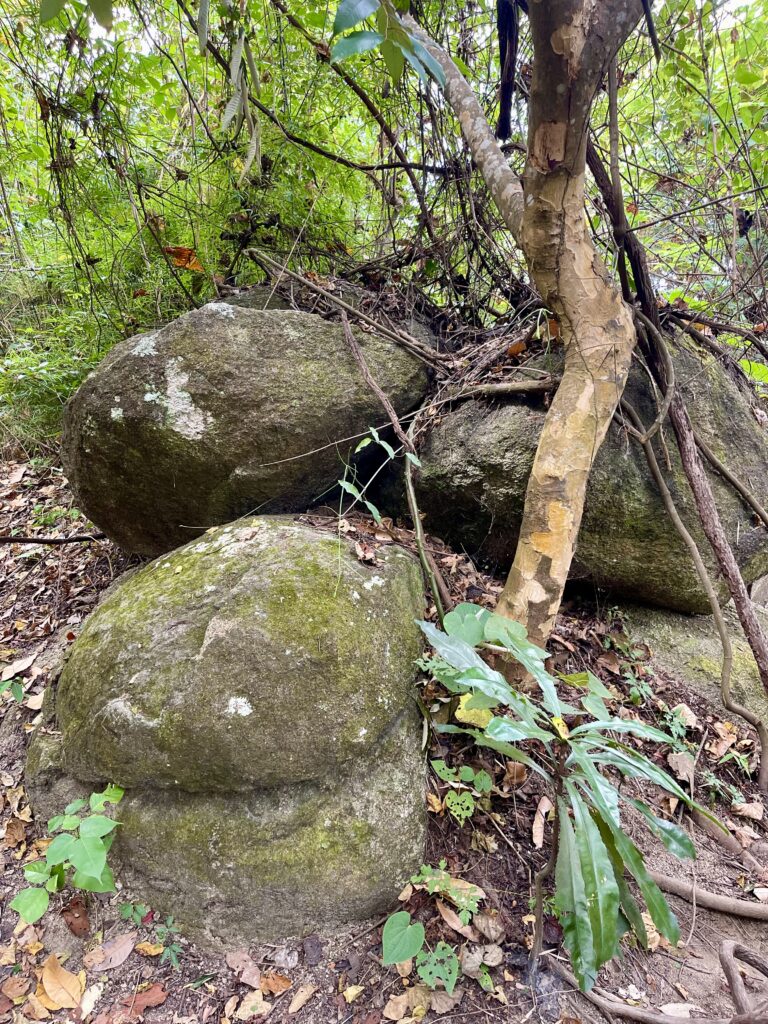
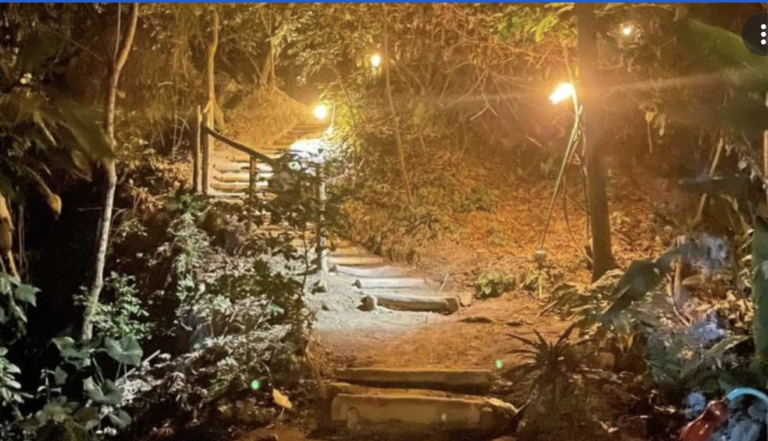
2 Responses